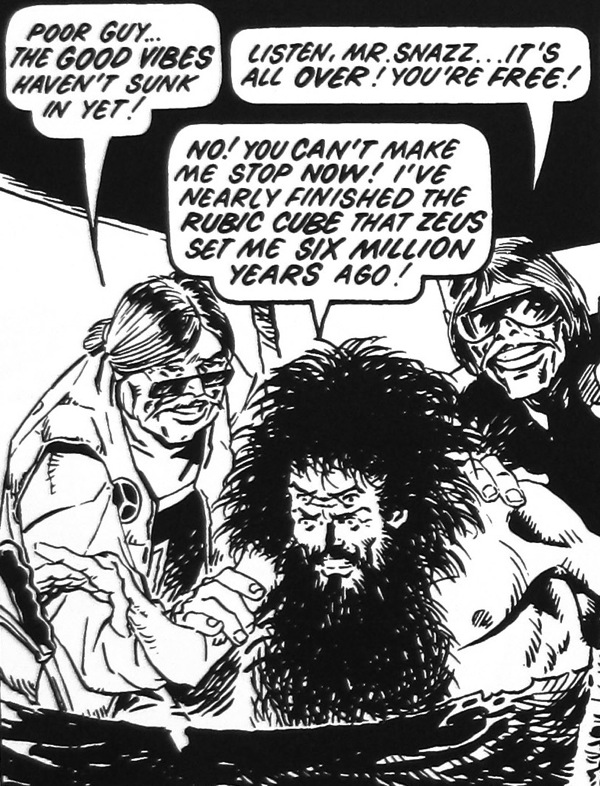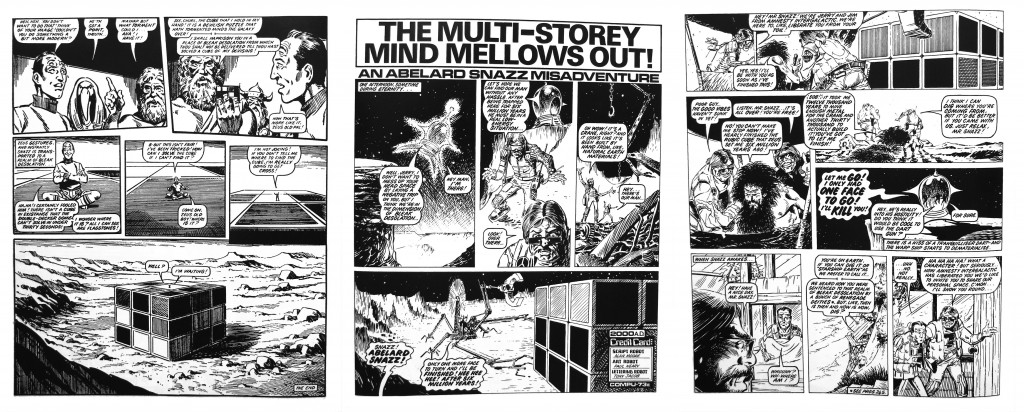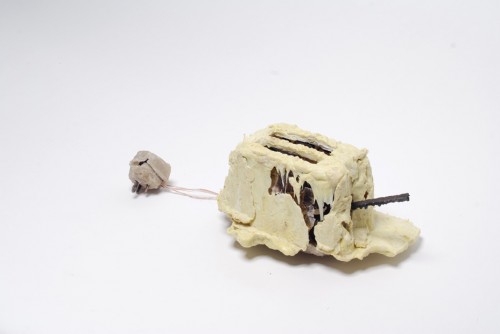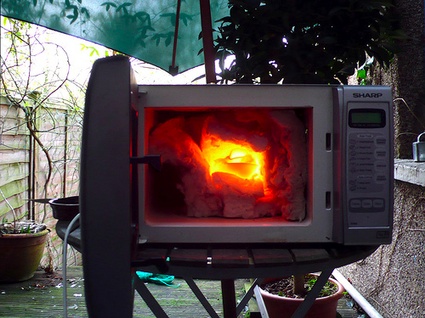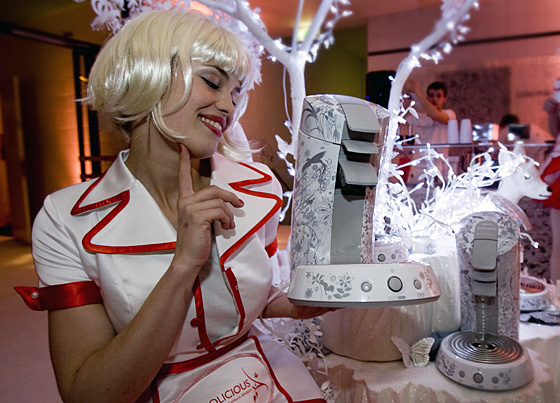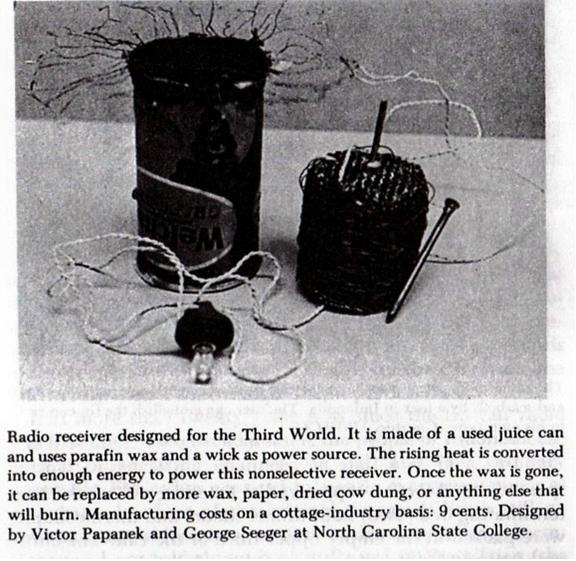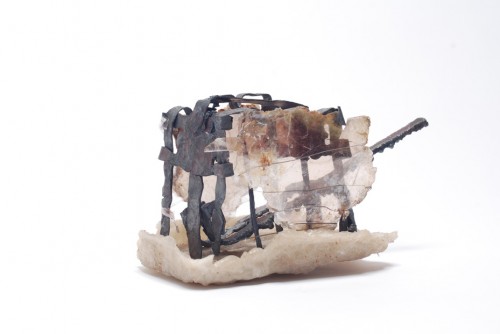In an “Abelard Snazz” story written by Alan Moore in 1982, Abelard Snazz, an egocentric and immortal character with four eyes (literally), is imprisoned for eternity on the bare surface of a planet by some gods he has inadvertently offended. Until he can solve a Rubik cube. An easy task for a self-professed genius.
The problem is that the cube is 50 metres high and across. Solving the puzzle takes him 6 million years, of which the first 30 000 years is spent mining enough metal to build a giant crane capable of rotating the sides of the puzzle. The remainder is spent manufacturing parts, assembling the crane…. and etcetera. Millions of years later, and to Abelard’s frustration, just moments before finally solving the cube, he is whisked off the plant by “Amnesty Intergalactic”, who want to help him escape his unlawful imprisonment.
The idea to try and produce a complicated industrial product or tool from scratch, starting with the most basic materials and working upwards, is not new and was perhaps first proposed by Leonard E. Read in his 1958 essay, I, Pencil., an essay from which Alan Moore might have drawn inspiration. I, Pencil illustrates the complexity of technological infrastructures by describing all the actions which combine to produce a simple Eberhard Faber pencil; the mining and refinement of graphite for the lead, the logging of pine wood for the shaft, and the processing of various metals, plus rubber for the eraser tipped end. Read conjectures that no man would be able to single-handedly produce a product as complicated as pencil from scratch, without existing technologies, and even with existing technologies, excluding machinery built expressly for the purpose, making a single pencil would cost more than $50,000 in 1958 dollars. Indeed, this is what bringing new products to market can traditionally cost, at least until the division of labour and production efficiencies bring the price down, in the case of a pencil, to just a few cents. Read concludes that the production of pencils highlights the efficiencies of free trade and the capitalist market to synergise the efforts of individuals, working from self-interest, into a complicated and dynamic technological system for the benefit of all.
Inspired by the Read’s story about the pencil, last year Royal Academy of Art student Thomas Thwaites set out to attempt the impossible and build himself a toaster from scratch, using only the most basic materials and technology he could find. His aims included mining and smelting iron and nickel-ore, with subsequent processing into wires, springs and heating elements by hand, and obtaining some petroleum from which he could attempt to refine plastic for the outer casing.
While conceived as an art project to question the state of modern technologucal scoiety, its best quality is not that it exposes failings of the industrial world. Taken broadly I think the industrial world, having given us advances in medicine, transport, energy et al, are fairly impervious to criticism from conceptual art projects. However, the project does expose the trappings and inertia of industrial design, and the consumerism that supports it. His project shows us what actions must take place to produce a a toaster, and questions why it is made the way it is, and possibly, whether we need it in the first place.
The presentation of his project is infected with failure. Thwaites found the production of raw materials difficult. A 500 year old technique for smelting iron in a ceramic crucible proved impossible, so he resorted to using a microwave. An ingenious solution begging the question of whether he should have first tried to build a microwave. This irony is not lost on Thwaites and even feeds his later suggestions, such as his dream of flying to a offshore oil rig in a helicopter to pick up some crude oil. This goes unrealisd; with his project deadline approaching he resorts to melting waste plastic into the (very) rough shape of a Chinese factory made toaster. All these little concessions and cheats however do not diminish the project, instead they remind us that there is nothing discrete about technological processes. One step relies on another, and with each step the distance from a personal body of knowledge increases.
Radley Balko from the libertarian magazine Reason, in a haphazardly perceptive and occasionally humourous rant, responded by calling it a mockery. A mockery it is for sure; its final appearance is apocalyptic and when finally plugged in the toaster didn’t work, but exploded in sparks. Balko sees it as left-wing liberal arts crticism of the capatalistic free market which generates and shapes the industrial processes that produce toasters. Processes, he argues, that are periperal or intrinsic to many other technologicies, creating wealth, freedom, and leisure time from which Thwaites has been spoilt, and which he is exploiting in order to produce his art in the first place.
While Balko is right about the framing of the industrial processes in Thwaites work, I don’t see it as mockery of technological society as a whole, but a mockery of a certain type of design. Specifically, industrial design driven by a consumerist desire for new and shiny things, and which tends to hide and obfuscate material qualities. The projects ultimate importance is that it exposes the material essence of products, a confrontation to any designer building futuristic, blobby products whose realisation relies on more highly evolved and technological knowledge than they could ever hope to grasp, and whose success relies on the abscence of critical consumer perception. This is, once again ironically, illustrated by Thwaites’ display of that which he is attempting to reproduce, a cheap factory made toaster, the Argus Value Range 2 Slice toaster, filmed and idolised on a white pedestal in a video on his site, soundtracked with classical music.
Argos Value Range 2 Slice Toaster from Thomas Thwaites.
I can explain this design problem in another way, from my own experience. In 2008 I attended a Cradle to Cradle workshop orgainzed by Koekoek and Qreamteam in Venlo, the Netherlands. After some bland lectures, the organisers made groups and handed out half a dozen Phillips Senseo coffee machines, asking us to take them apart and count and sort the components. My group counted 43 components and 17 different materials in one machine, many of them unrecyclable composites. And I think we missed a few. The process was fascinating, especially as the group was a professional mix of engineers, businessmen and designers. We were asking each other, what is this material? What is its use? Why does a machine that fundamentally just heats up water need so many components in the first place? The shallow answers to these questions are technical, as the engineers in the group were eager to explain. For example, the Senseo had a number of different plastic composites, including glass filled nylon and carbon filled nylon in various different ratios. This is because each composite has slightly different qualities, and the Phillips engineers, in the interests of technical mastery choose the most appropriate material for the technical scenario they created. This is perfectly well and fine if you are building something for NASA, and perhaps even very high-end electronics, but its insane for mass market consumables that do simply things like, as in this case, just boil water.
I should add that in all likelihood there were multiple design constraints at play. Component price and lightness (to reduce shipping costs) for example – in addition to the function that it boil water – further encourage the choice of such highly specific composites, when really companies should be concerned with constraints which alleviate secondary and tertiary costs to the community e.g durability, reusability, repair-ability and recyclability.
But to return the issue of technological mastery, I find it entirely probable that in some way coffee machine engineers really want to be NASA engineers. And probably they were trained at engineering schools which don’t differentiate the training for either type of engineer, holistically at least, encouraging the mastery of choosing specific materials for specific problems.An important difference is that NASA engineers, or engineers for any high technology mission critical application, are pretty well connected to the product life cycle and use. When a part breaks down in space, its the engineers who designed the part with whom the astronauts want to talk. Wouldn’t it be nice if we all had that luxury with our consumer products? While the coffee machine works perfectly well when unboxed by the consumer at home, the product lifecycle is compromised because it has too many complex parts, making it difficult to be repaired, re-used or recycled. It doesn’t come with the engineeer’s phone number, or even a repair manual. The engineers would be better off using their professional riguour to reduce the number of components and minimize the number of materials from which they are made.
Every time a designer introduces complexity to an object, they make it harder to understand. Fine. Some things are complicated, and require effort to understand. However, everytime a designer covers up complexity in an object, they make it impossible to understand. Its clear the Senseo has far more components than the Argus Value Range 2 Slice toaster, and that, from a Cradle to Cradle point of view, it is a clear disaster. The Chinese made toaster has fewer components and simple guts from today’s point of view. Yet, that’s a point of view refined by our increasing technological sophistication. Practically it makes no difference – for the people who would never dream of opening up the injection moulded casing in which the the coffee machine and the toaster are both presented. Philosophically, the coffee machine and the toaster suffer form the same problem; a design philosophy which emphasizies technical efficiencies and functional ease of use over life-cycle functionality and user intimacy. Their interiors are hidden away from the consumer with a shiny plastic shell; a push-button aesthetic preventing users from deeper interaction with or knowledge of the products in their lives. Victor Papanek said that his first commercial job after graduating from school was to design a radio, a task he labelled “shroud design” and hoped it was the first and last time he did such a thing. This is just to show this kind of criticism is hardly new, and dates back to at least the 1960’s.
Incidentally, Papanek went on to make a candle heat powered radio with his student George Seeger in 1962, an object that parralells Thwaites’ toaster, although Papanek radio did, at least experimentally, work. It boldly shouts its aesthetic of openness and simplicity; an object one could easily and intuitively delve into. An object as much for screwdriver as the hands and ears. Repair and re-use… shouldn’t we be rolling our sleeves up and getting sweaty with the guts of our belongings?
A question any industrial designer can ask themselves when designing a new product is: how hard would it be to create this object from scratch, like Read’s pencil, or Thwaites’ toaster, if they must?
Its true, Thwaites’ toaster is extremely ugly, but perhaps no uglier than the philosophy behind the thing he sought to re-create.

